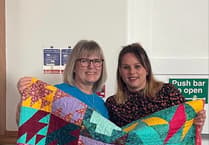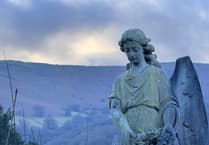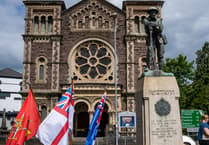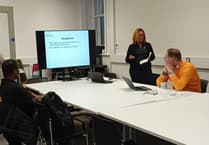Pubs! They’re a great British tradition. We’ve been boozing and talking nonsense in them ever since we decided life was far too dry for its own good and we needed a little something to take the edge off.
Yet pubs are not merely places where we can drown our inhibitions in rivers of alcohol and set sail to the far shores of oblivion. They’re places where people flock together to celebrate, to reminisce, to argue, to meet, to debate, to date, to laugh, to love, and to forget for a little while just how rough the wider world can be outside of the snug confines of the drinking den.
In the words of that great lush and ne’er-do-well Charles Bukowski, “When you drink the world is still out there, but for the moment it doesn’t have you by the throat.”
Pubs have changed a lot offer the years but their fundamental purpose remains the same, to perk up the populace when it needs it most.
And in these trying times of pestilence and despair has propping up the bar and making merry ever appeared more appealing?
Like most towns, Abergavenny has had its fair share of public houses down the years and through the centuries.
Some are all but forgotten, some are no longer with us, and some have stood the test of time and have yet to call last orders and disappear into the past. Yet each and every watering hole which has opened its doors on the town has played a pivotal role in shaping and sustaining Abergavenny.
Let’s take a butchers at a few of them.
Starting at number six Frogmore Street, The Golden Lion, which Lion Street was named after, was the oldest recorded pub in Abergavenny before its closure.
It was to the Golden Lion that Father David Lewis, the Abergavenny born martyr, was brought for examination after his capture at Lantarnam.
Shortly after he was hanged at Usk on August 27, 1679.
The Golden Lion’s landlord, William Crump, sat on the jury at the trial of Chartist leader John Frost
The Golden Lion was later known as the Sugarloaf but it called last orders in 1986. You’ll know it today as Cafe Nero.
The King David, which once stood on the corner of Lewis Lane was also noted for its home-brewed beer and its stables could accommodate 20 horses.
The Britannia, which is now a lovely Italian restaurant called Casa Bianca, can be traced back to at least the reign of William IV. It was not always a corner premise and existed before the cutting of Baker Street.
The White Horse Inn (no. 14), which was demolished in 1965 achieved some notoriety in 1825 as the starting point of a ‘feat of pedestrinization’. The handbill from that time reads as follows.
“Pedestrian J. Townsend most respectfully informs the inhabitants of Abergavenny and Monmouth that on Monday morning, July 11, 1825, he will start from the White Horse, Abergavenny, and walk to the Robin Hood, Monmouth, and return to the White Horse, and go to the Lamb and Flag, Llanwenarth, and return to the White Horse - being a distance of 66 miles in one day. This feat he will perform for six successive days. No man ever performed such as an astonishing feat before. It is for no wager, but merely to show the people of Abergavenny and Monmouth what he can do. Any donations that they may be pleased to give will be thankfully received.”
An ostler at the White Horse called ‘Jack o ‘Breed’ was said to have been quite the character. He caused an even bigger stir upon his death. Apparently, after he was buried in St Mary’s Church Yard, some young men in the town, several of whom belonged to the medical profession, dug his body up for the purpose of dissection. Poor old Jack had, through the years, sold his body to the doctors over and over again for a trifling consideration. The good doctors were merely claiming what they thought was the end product of a fair and just bargain. The subsequent hue and cry in the town about the theft of Jack’s body caused the ‘resurrectionists’ to reflect on their actions and the body was placed back in the coffin.
The Butchers’ Arms which used to stand opposite the War Memorial was one of the town’s oldest houses and was thought to have been Elizabethan.
And that’s just the tip of the iceberg when it comes to the many pubs which could once be found in Frogmore Street. You also had the King William (no 7), the Old Herefordshire House (no 25), the Butcher’s Arms (no 42), the George Inn (no 43), the Three Salmons (no 46), The Bell (no 50), The Griffin Inn (no 59), The Welcome Temperance Hotel (no 60), and The Black Swan, to name but a few.
In Nevill Street, the Vaughan’s townhouse would later become a public house called the Cow Inn, where cattle drovers would take their fill of ale and strike a hard bargain. It also doubled up as a post office in the eighteenth century. And as a sign of the times, in 1873, it changed its name to the Cow Temperance Hotel.
In 1912 The Cow Inn was renamed the Nevill Temperance Hotel and was at some point the headquarters of an organization calling itself The Gentleman’s Club.
Besides the Cow Inn, there were a number of other notable watering holes in Nevill Street back in the day. You had the Bull, the Black-A-Moor’s Head, the Dragon’s Head Inn, the Raven Hotel, and of course the King’s Arms, which sadly is the last man standing.
The Dragon Head’s Inn later became that great little dark and dingy boozer locals knew as the British Legion club.
During its renovation in 1961, a rather crude painting of a heraldic lion rampant was discovered on an interior wall. Why? No-one knows but it was quickly covered up again in case it upset any of the Legion’s beer lovers.
Nowadays the former Legion has become the world-famous coffee pot, which has a handy habit of creating the sort of unusual drinks that go viral on Facebook.
The brilliantly named Raven Hotel (No 1-3 Nevill Street) would naturally have been the drinking den of choice for Edgar Allan Poe if the Boston bard had ever ventured to these shores.
However, the peculiar choice of pub name was thought to be a direct result of Abergavenny’s stubborn nature.
The story goes that in 1689 the Town Mayor flat out refused to swear his allegiance to William of Orange because he and most of the town’s folk remained loyal to the recently replaced Stuart King James II.
As a result, the town’s borough charter was removed, but in a show of defiance, the Raven Hotel continued to fly the flag of the Raven which was then the Jacobite symbol of loyalty to the Stuart. No doubt many a toast to king and country was held in this illustrious Nevill Street pub.
The Raven later became known a Waterloo House and by 1845 it was a surgery for famous local physician Samuel Steele. From 1884 until 1947 the building was the headquarters of Cadle’s Grocery.
Back in the day and we’re talking 1712 here folks, there also used to be a King’s Head operating out of number seven Nevill Street and a past landlord who had the splendid name of Jehosophat Jones.
The King’s Arms is still perched on the corner of Nevill Street and continues to bear the royal arms of Charles II on the frontage on its bright yellow exterior.
In 1817, two years after the Battle of Waterloo, a troop of the King’s and 15th Hussars stayed there. They were in town to basically beat up unemployed people in Tredegar and Natnyglo who had the brass neck to rebel against the status quo.
Over the fireplace in the lounge of the King’s Arms you can see still see where the soldiers inscribed, “Good Quartering Forever 1817 King & 15 Huzzars Hall Troop 24.”
The King’s Arms is also said to have a ghost in the form of the White Lady. This unhappy soul was apparently raped by a perverted monk who was once offered sanctuary at the inn.
The White Lady died in childbirth, and to this day is thought to still roam the upstairs rooms, lost and alone, eternally searching for the child she never got to hold in her arms.
As for the vile monk, justice caught up with him in a big way and he was hung drawn and quartered at Monmouth.
And so our jolly little wander down the highways and byways of all our yesterdays comes to an end as we collectively face the hangover of an uncertain future together.
But remember, in these testing and torrid times it’s important to support your local businesses, restaurants, cafes, and pubs just like they’ve supported the town through good times and bad.
As Charles Bukowski once said, “I still have a little whiskey left and therefore a chance.”
All pictures from the Albert Lyon collection





Comments
This article has no comments yet. Be the first to leave a comment.